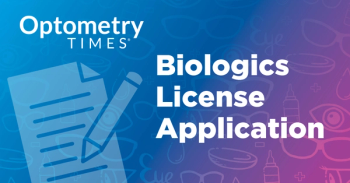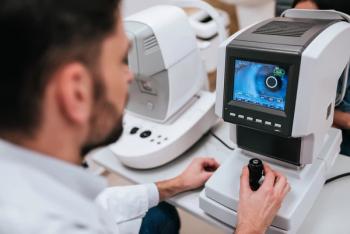
Parental lag time is primary reason for delayed diagnosis and treatment of retinoblastoma
Ocular salvage and preservation of vision are essentially dependent on early diagnosis, and several studies have been conducted to identify the factors leading to delayed diagnosis at presentation.
A study performed by Indian researchers found that children with retinoblastoma were diagnosed after a lag time of under 3 months, which in turn delayed treatment. They cited the need for training and awareness initiatives to improve management of these patients,1 according to the first author Sima Das, MD. She is from the Oculoplasty and Ocular Oncology Services, Dr Shroff’s Charity Eye Hospital, New Delhi, India.
Retinoblastoma is the most common intraocular malignant cancer in children, and survival rates depend on the geographic location and the economic status of the country. Das and colleagues cited a study that reported that the 3-year survival rate in low- and middle-income countries was 50% in contrast to almost 100% survival in patients in high-income countries.2
The survival rates reported from high-income countries range were 88% in the United Kingdom and 93% in the US.3,4 However, in countries like India, Nepal, Africa, and South American countries, the children with retinoblastoma present much later when the disease is more advanced and their prognoses are significantly inferior. For example, orbital retinoblastoma has been reported to be 18% in Mexico, 36% in Taiwan, and 40% in Nepal, and ranges from 9% to 45% in India, Das and colleagues related.5-12
“Delay in diagnosis of retinoblastoma has been associated with lower chances of globe salvage and higher mortality.13,14 Studies from South America have noted prolonged time to diagnosis to be more associated with extraocular disease at presentation.15,16 Reduced lag time to diagnosis has been associated with less advanced RB, as found in a Swiss study.17 A large proportion of the delay in diagnosis has been attributed to delayed referral to specialists,18” they emphasized.
Ocular salvage and preservation of vision are essentially dependent on early diagnosis, and several studies have been conducted to identify the factors leading to delayed diagnosis at presentation.19,20
It currently remains unclear the degree to which prolonged lag time is attributable to delayed presentation by the family (parental lag time) as opposed to delays in the healthcare system (system lag time). This prospective, multicentric study of newly diagnosed retinoblastoma was undertaken to investigate lag time and its correlation with various variables.
Effects of parental lag time
The study extended over 3 years and included 1,120 patients from 20 centers.
The investigators reported, “Extraocular or metastatic disease was present in 25.2% of patients at diagnosis. The mean lag time from symptom onset to treatment initiation was 4.2 months (range, 0.5–61.6 months). Parental, diagnosis, and treatment lag times contributed to 44%, 26%, and 31% of the total lag time, respectively.
Parental lag time was the chief culprit in the delayed diagnosis of retinoblastoma and treatment.“Increased lag time was significantly correlated with the stage at presentation (P < 0.05), lower socio-economic status (P = 0.006), increased distance from treating center (P = 0.001), younger maternal age at pregnancy (P < 0.05), family history of cancer (P = 0.031), and first consultation with a non-specialist (P = 0.001), and was negatively correlated with improved maternal education.
Das and colleagues concluded, “Parental lag time is the major contributor to the cascading delay in retinoblastoma diagnosis and treatment initiation. Efforts for earlier diagnosis, therefore, need to be directed towards community awareness and routine screening during contact with healthcare professionals, such as at immunization. The first consultation with a nonspecialist other than an ophthalmologist or pediatrician was associated with delayed diagnosis. Hence, training and awareness initiatives should be directed towards all cadres of healthcare workers and not be limited to specialists.”
References
- Das S, Meel R, Mahajan A, et al. Lag time for diagnosis and treatment in 1120 retinoblastoma children: Analysis from InPOG-RB-19-01. Indian J Ophthalmol. 2025;
73:1124-31. DOI:10.4103/IJO.IJO_3031_24. - Fabian ID, Abdallah E, Abdullahi SU, et al. Global Retinoblastoma Study Group Global retinoblastoma presentation and analysis by national income level. JAMA Oncol. 2020;6:685–95.
- Sanders BM, Draper GJ, Kingston JE. Retinoblastoma in Great Britain 1969–1980: incidence, treatment and survival. Br J Ophthalmol. 1988;72:576–83.
- Abramson DH, Niksarli K, Ellsworth RM, Servodidio CA. Changing trends in the management of retinoblastoma 1951–1965 vs 1966–1980. J Pediatr Ophthalmol Strabismus. 1994;31:32–7.
- Leal-Leal C, Flores-Rojo M, Medina-Sanson A, et al. A multi-centre report from the Mexican retinoblastoma group. Br J Ophthalmol. 2004;88:1074–7.
- Kao LY, Su WW, Lin YW. Retinoblastoma in Taiwan: Survival and clinical characteristics 1978–2000. Jpn J Ophthalmol. 2002;46:577–80.
- Badhu B, Sah SP, Thakur SK, et al. Clinical presentation of retinoblastoma in Eastern Nepal. Clin Exp Ophthalmol. 2005;33:386–9.
- Kaliki S, Patel A, Iram S, Ramappa G, Mohamed A, Palkonda VAR. Retinoblastoma in India: clinical presentation and outcome in 1,457 patients (2,074 eyes). Retina. 2019;39:379–91.
- Hazarika M, Kumar G, Saikia BJ, et al. Clinicoepidemiological profile and treatment outcomes in children with retinoblastoma: Experience from a cancer care center in Northeast India. South Asian J Cancer. 2022;11:269–73.
- Singh U, Katoch D, Kaur S, Dogra MR, Bansal D, Kapoor R. Retinoblastoma: a sixteen-year review of the presentation, treatment, and outcome from a tertiary care institute in Northern India. Ocul Oncol Pathol. 2017;4:23–32.
- Pant G, Verma N, Kumar A, Pooniya V, Gupta SK. Outcome of extraocular retinoblastoma in a resource limited center from low middle income country. Pediatr Hematol Oncol. 2017;34:419–24.
- Chawla B, Hasan F, Azad R, et al. Clinical presentation and survival of retinoblastoma in Indian children. Br J Ophthalmol. 2016;100:172–8.
- Kaliki S, Ji X, Zou Y, et al. Lag time between onset of first symptom and treatment of retinoblastoma: An International collaborative study of 692 patients from 10 countries. Cancers (Basel). 2021;13:1956.
- Fabian ID, Stacey AW, Foster A, et al. Travel burden and clinical presentation of retinoblastoma: Analysis of 1024 patients from 43 African countries and 518 patients from 40 European countries. Br J Ophthalmol. 2021;105:1435–43.
- Chantada G, Fandino A, Manzitti J, Urrutia L, Schvartzman E. Late diagnosis of retinoblastoma in a developing country. Arch Dis Child. 1999;80:171–4.
- Canturk S, Qaddoumi I, Khetan V, et al. Survival of retinoblastoma in less-developed countries impact of socioeconomic and health-related indicators. Br J Ophthalmol. 2010;94:1432–6.
- Wallach MBA, Munier F, Houghton S, Pampallona S, von der Weid N, Beck-Popovic M. Shorter time to diagnosis and improved stage at presentation in swiss patients with retinoblastoma treated from 1963 to 2004. Paediatrics. 2006;118:e1493–8.
- Sethi S, Pushker N, Kashyap S, et al. Extraocular retinoblastoma in Indian children: clinical, imaging and histopathological features. Int J Ophthalmol. 2013;6:481–6.
- Goddard AG, Kingston JE, Hungerford JL. Delay in diagnosis of retinoblastoma: risk factors and treatment outcome. Br J Ophthalmol. 1999;83:1320–3.
- Butros LJ, Abramson DH, Dunkel IJ. Delayed diagnosis of retinoblastoma: Analysis of degree, cause, and potential consequences. Pediatrics. 2002;109:E45.
Newsletter
Want more insights like this? Subscribe to Optometry Times and get clinical pearls and practice tips delivered straight to your inbox.










































